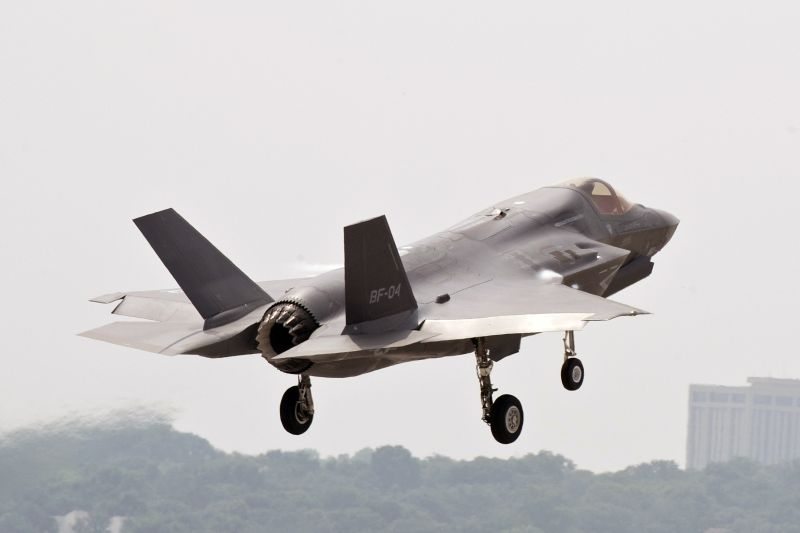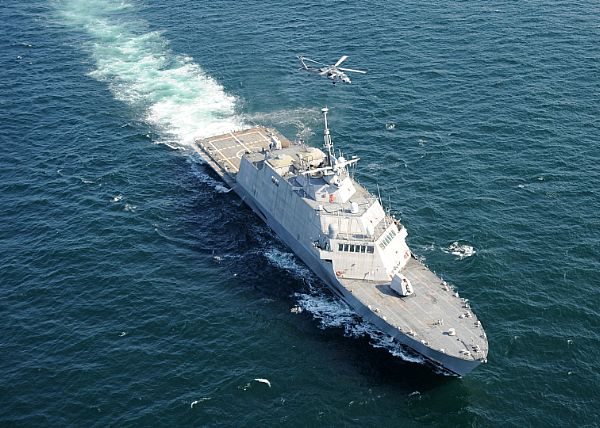Two weeks ago, Secretary of Defense Robert Gates announced that the Marine Corps’ version of the F-35 Joint Strike Fighter is in trouble. While “two of the JSF variants, the Air Force version and the Navy’s carrier based version, are proceeding satisfactorily,” Gates said, “by comparison, the Marine Corps’ short take-off and vertical landing variant is experiencing significant testing problems.”
What are those testing problems? A recently issued Pentagon report details many of the problems that led Gates to put the Marine’s variant on “probation” and recommend its cancellation after two years if it does not get “back on track.”
But first, to get a sense of how truly serious this all is, let’s revisit a few more things the SecDef said on January 6.
Testing of the F-35B has uncovered issues that “may lead to a redesign of the aircraft’s structure and propulsion—changes that could add yet more weight and more cost to an aircraft that has little capacity to absorb more of either,” Gates said.
Because of the problems uncovered by the testing so far and the risks involved with redesigning the F-35B, Gates said he is “placing the STOVL variant on the equivalent of a two-year probation.”
“If we cannot fix this variant during this time frame and get it back on track in terms of performance, cost and schedule, then I believe it should be cancelled,” Gates said. “We will also move the development of the Marine variant to the back of the overall JSF production sequence,” he added. “And to fill the gap created from the slip in the JSF production schedule, we will buy more Navy F/A-18s.”
Gates’ announcement came after “the Joint Strike Fighter program received special scrutiny given its substantial cost, ongoing development issues, and its central place in the future of U.S. military aviation,” Gates said. The special scrutiny was an in-depth “Technical Baseline Review” (TBR) that thoroughly examined numerous aspects of the F-35 program.
The FY2010 annual report by the Pentagon Office of the Director of Operational Test and Evaluation (DOT&E)—most of which was obtained and made publicly available by POGO this week—has a section that fleshes out some of the TBR’s findings and many of the testing issues encountered by the JSF program, which by the way, has been estimated to reach a total cost of $382 billion (this figure represents a higher end estimate for all three variants; ultimately the program’s cost could vary greatly).
To help readers get right to it, we’ve cut and pasted the passages relevant to the troubled F-35B variant, although there is some material below related to the other two variants as well. Warning: The language is fairly technical. But there’s a lot to chew on…
- * “[P]rogress in testing the Short Take-Off and Vertical Landing (STOVL) aircraft was less than planned.”
- * “Immaturity of STOVL design and unexpected component deficiencies limited successful accomplishment of test points in areas critical to short take-off and vertical landing capability. Development of mission systems software continued to experience delays that affected flight test progress.”
- * “Low fly rates on STOVL flight sciences aircraft and unanticipated deficiencies in the design had begun to emerge in flight test. Analysts during the review indicated STOVL flight sciences was becoming the critical path to complete [System Development and Demonstration ] SDD flight test. The program acknowledged later ferry dates for remaining SDD test aircraft. The estimates of SDD flight test completion was extended to July 2015.”
- * “During the months since the last program review, more problems with STOVL design and mission systems software arose.”
- * “The TBR also determined more time was needed for completion of all remaining software increments. The result is a completion of developmental flight test in late 2016, with STOVL flight sciences completing later than the other two variants.”
- * “In FY10, STOVL Flight Sciences aircraft flew 130 of 173 sorties; the test team accomplished 1,467 of 1,678 planned test points. However, the test team accomplished only 10 of 42 planned vertical landings between March and November 2010; these are key to the shore-based build-up to testing on L-class amphibious ships at sea. In the first two months of FY11, STOVL flight sciences aircraft flew 54 sorties, 5 more than planned; the test team accomplished 356 of 506 planned test points. From mid-August until early November, the test team flew CTOL-mode configurations due to limitations of the vertical-lift capability of the STOVL system. STOVL –mode flight test operations began again in BF-1 in November 2010.”
- * “Discoveries during STOVL Flight Sciences testing this fiscal year include transonic wing roll-off, greater than expected sideslip during medium angle-of-attack testing, and problems with reliability and maintainability of key components.”
- * “The program anticipates ferry of BF-5 in late March 2011 and CF-3 in May 2011; these deliveries to the test centers are approximately four and five months later than planned, respectively.”
- * “Results for a loading equivalent to one aircraft lifetime (8,000 hours) were expected in mid-FY11 for the STOVL aircraft and early FY12 for the [Conventional Take-off and Landing] CTOL aircraft. However, a major fatigue crack was found in the STOVL test article at approximately 1,500 hours flight hours. Failure of the bulkhead in flight would have safety of flight consequences. The program stopped fatigue testing on both the STOVL and CTOL test articles and began root cause analysis in November 2010. The STOVL bulkhead is constructed of aluminum alloy. The CTOL and CV bulkheads have a similar but not identical design and are made of aluminum. The difference in bulkhead material is due to actions taken several years ago to reduce the weight of the STOVL aircraft.”
(Remember Gates’ comment about the potential for redesigning parts of the F-35B’s structure? One of the possible redesigns may involve an aluminum bulkhead located where the F-35B’s main landing gear attaches to the airframe, according to Defense News. However, Lockheed Martin, the F-35’s prime contractor, told reporters days after Gates’ speech that this isn’t a problem after all. “A redesign of the bulkhead is completed and an implementation plan has been developed. No cracking was found in any of the flight test aircraft, and flight testing has not been affected. Other locations of similar design are also being assessed,” a company spokesman John Kent said in an e-mailed statement to Defense News on January 11.) - * “[T]he STOVL design emerged as the highest risk of all variants and the most difficult to progress through flight test. This is due in part to the difficulty in making progress in vertical lift operations compared to that planned. The analyses also revealed that the F-35 mission systems software development and test is tending towards familiar historical patterns of extended development, discovery in flight test, and deferrals to later increments. The modifications recommended by the TBR (lower fly rates, more regression and re-fly margin, more nights, and other resource additions) that result in completion of SDD flight test for Block 3 in all three variants later than previously estimated are realistic and credible. Completion of STOVL flight sciences in this timeframe is dependent on whether or not the necessary changes to STOVL design can be implemented and tested. It will also depend on whether these changes result in fewer aircraft operating limitations and greater aircraft availability for test. The program will potentially need as much as a year longer than the other two variants to complete this variant’s Right sciences and ship integration testing. The expectations approaching 10 to 12 flight sciences sorties/month/aircraft in previous schedules are not achievable in the flight test program until changes are made to all variants that improve reliability and maintainability in flight test operations, Additionally, the process must begin to reduce the aircraft operating limitations, which inhibit flight test progress particularly in vertical lift STOVL testing.”











